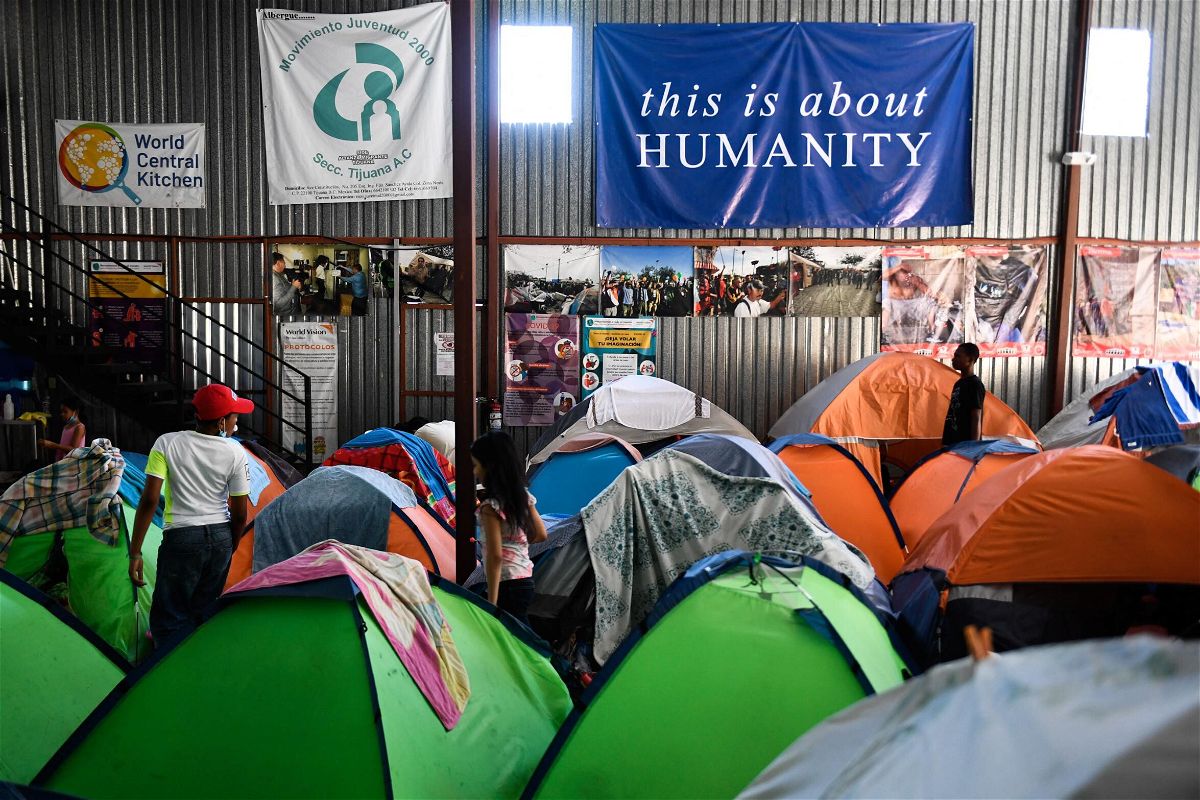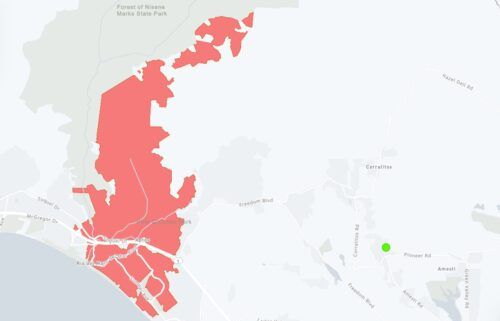How today’s Supreme Court decision could change things at the border

A Supreme Court ruling on June 30 could shape what we see going forward along the US-Mexico border.
By Catherine E. Shoichet, CNN
A Supreme Court ruling Thursday could shape what we see going forward along the US-Mexico border.
In a 5-4 ruling, justices found that immigration law gives the Biden administration discretion to end the “Remain in Mexico” policy, which forced some migrants to wait in Mexico while their immigration cases were pending.
The case will now head back to the lower court for additional proceedings, but the Supreme Court’s ruling puts Biden one step closer to ending the program.
Here are some key questions about the policy and what could happen next.
What impact will the Supreme Court decision have?
A hold on Biden’s bid to end the program remains in place, but Thursday’s ruling suggested that lower court order should be lifted shortly.
That would allow the Biden administration to roll back the “Remain in Mexico” program, something officials first tried to do in 2021 before a federal court decision blocked their efforts months later. That means thousands of migrants who are currently waiting in Mexico as part of the program could be paroled into the United States to proceed with their immigration cases here.
Last year, prior to the lower court’s order, the Biden administration put a process in place to allow migrants subject to the policy to gradually enter the US until their immigration cases were decided. Before the unprecedented “Remain in Mexico” policy, migrants were released into the US or detained for the duration of their immigration court proceedings.
When was this policy put in place and why?
The Trump administration implemented the program, officially dubbed the “Migrant Protection Protocols,” or MPP, in January 2019. The program sent certain non-Mexican migrants who entered the US back to Mexico — instead of detaining them or releasing them into the United States — while their immigration proceedings played out.
Officials said it would stop migrants from taking advantage of the immigration system while keeping them safe.
But immigrant advocacy groups have argued that forcing asylum seekers to wait in Mexico while their cases make their way through US courts actually puts vulnerable people in even more dangerous situations.
What’s happened since then?
As of February 2021, advocacy group Human Rights First said it had documented more than 1,500 cases of murder, rape, torture, kidnapping and other violent assaults impacting migrants who were forced to wait in Mexico as part of the program.
“Significant evidence indicates that individuals were subject to extreme violence and insecurity at the hands of transnational criminal organizations that profited from putting migrants in harms’ way while awaiting their court hearings in Mexico,” Homeland Security Secretary Alejandro Mayorkas said in an October memo detailing his decision to end the program.
How many people have been enrolled in the program?
Between January 2019 and June 2021, about 68,000 migrants were sent to wait in Mexico as part of the program.
Of that group, more than 32,000 were ordered removed, nearly 9,000 had their cases terminated, and just 723 were granted asylum or some other kind of immigration relief, according to a Migration Policy Institute analysis of government statistics. Some migrants who were forced to wait may also have abandoned their cases and returned to their home countries, the institute said.
Shortly after President Biden took office, the Department of Homeland Security suspended new enrollments to the program and kicked off the process of gradually allowing asylum seekers previously subject to the program into the US.
In June 2021, the Biden administration announced an official end to the program, and by August, officials had allowed 13,000 migrants to return to the United States and pursue their cases, MPI said.
A federal judge’s ruling in August 2021 blocked the administration’s efforts to end the program, finding officials hadn’t followed proper administrative procedures.
That ruling forced the Biden administration to restart the program in December. The International Organization for Migration estimates more than 5,000 migrants enrolled in the program since then are currently waiting in Mexico.
Why has the Biden administration tried to end it?
Mayorkas said continuing the program has strained resources and disrupted diplomacy with Mexico.
“There are inherent problems with the program that no amount of resources can sufficiently fix,” Mayorkas wrote.
He acknowledged the program likely reduced the number of people crossing the border.
“But it did so by imposing substantial and unjustifiable human costs on the individuals who were exposed to harm while waiting in Mexico,” he added.
He said the administration is “committed to the twin goals of securing our borders and offering protection to those fleeing persecution and torture.”
And he said the program was “neither the best, nor the preferred, strategy for achieving either of these goals.”
Is this the same thing as Title 42?
No. The two policies often are discussed together, since both impact what authorities have the power to do when they encounter migrants at the US-Mexico border. But “Remain in Mexico” is separate from the public health authority known as Title 42, which allows border officials to turn back migrants encountered at the border, therefore barring them from seeking asylum.
“Remain in Mexico” still gave migrants the chance to seek asylum in the United States. (Title 42 is the subject of separate legal challenges; a federal judge has temporarily blocked Biden from ending that authority.)
The-CNN-Wire
™ & © 2022 Cable News Network, Inc., a WarnerMedia Company. All rights reserved.
CNN’s Ariane de Vogue and Tierney Sneed contributed to this report.



